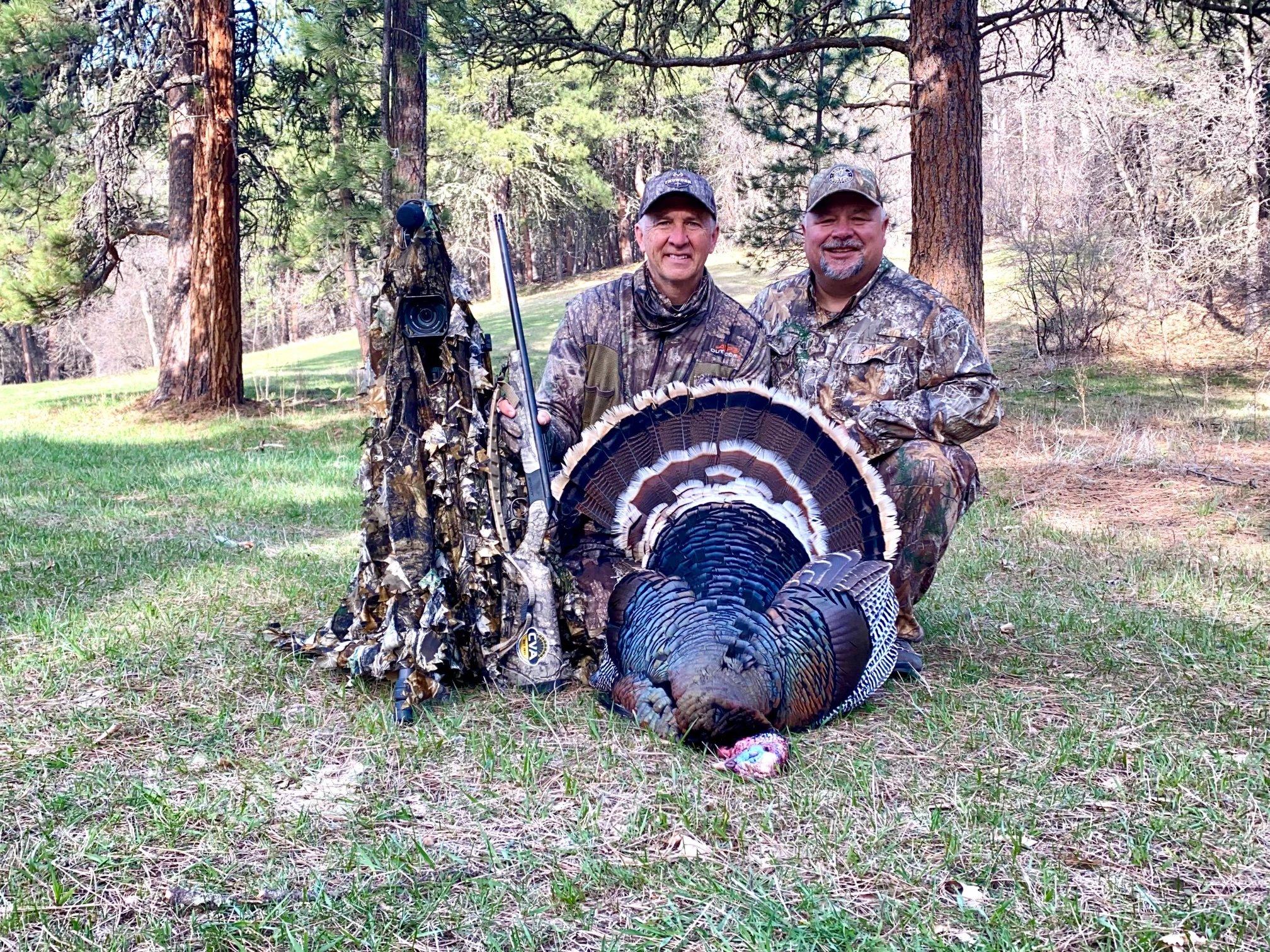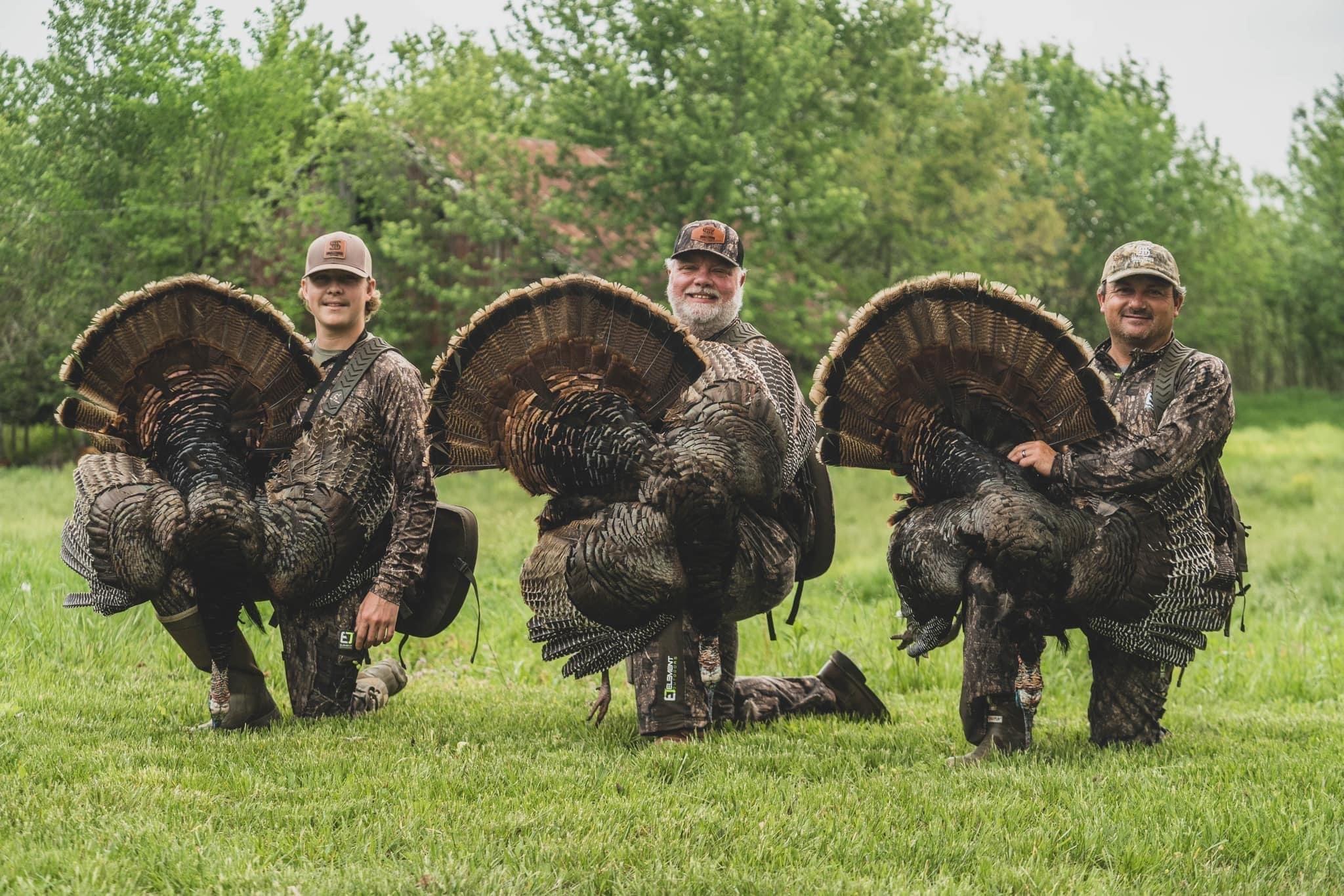With gobblers still henned up across much of the northern region, the forecast is for better weather and better hunting during the final weeks of the 2023 turkey season

Henned-up birds and fewer numbers have created a challenge for hunters across the board, but the next couple of weeks may produce more action. Image by Christina Radcliffe
I’d been considering selling my calls and decoys over the past week while hunting Wisconsin’s Time Period D (I’m joking, obviously) until success came Saturday morning. I had my share of frustrations for the first three days. The first one was when a gobbler was less than 10 yards away and coming hard to the decoys. He suddenly spun and left, stopping 100 yards away to gobble constantly for the next half an hour. I’d been bowhunting and couldn’t maneuver quickly enough for a shot out the back of the blind.
The other frustrations came in the form of henned-up gobblers that wouldn’t budge unless the hens did. They also gobbled sparingly once on the ground. But the frustrations ended when, after an hour of watching a gobbler courting hens, the hens led him and a jake to within 32 yards of my Benelli muzzle.
I’m writing this from the woods as I try for a second Time Period D gobbler with two days left. Toms are still henned-up and not coming to the calls. Wisconsin’s season ends May 30, and historically, my fastest hunts have been during the final two weeks of the season. The best is yet to come, and I’m excited for gobblers to be freed up and out on the prowl. Until then, toms might be henned-up for several days yet, and the key is to be where they want to be, as my Saturday morning hunt proved.

While hunting with guide Kenny Morga of Seven J Outfitters in Wyoming, Realtree’s David Blanton took this tom late in the morning by moving to a strutting zone after the fly-down hunt didn’t produce. (Photo courtesy of David Blanton)
That reminds me of how Realtree’s David Blanton got his recent Wyoming gobbler. “My guide and I determined a strut zone,” he explained. “We had no luck right off the limb, so we got to the strut zone about two hours after daybreak. It was a very intuitive move. I killed my tom within two hours. It was a classic case of being where the tom wanted to be.”
Meanwhile, Kansas was good to Cody Kelley, Keith Burgess, Chris Ashley, and Joey Dombroski of Small Town Hunting, where they each took a tom. “Birds were very responsive in the mornings,” Kelley said. “We didn’t hear much gobbling during the day as the temps heated up. Hens were going to nest early, and the longbeards were very responsive to calls. Decoys were not as effective, but yelping worked great as they were coming in looking and gobbling. There were lots of jakes, which was great to see. We saw jakes on every hunt.”
Realtree.com Editor Will Brantley just returned from a successful Nebraska Sandhills outing. “I got both of my birds,” he said. “I had to work for them. Toms were very henned-up from fly down until midday. I shot one of my birds at 7:45 p.m., and he put on an awesome show. I saw fewer jakes this year than I have in a decade of hunting Nebraska, and that’s pretty concerning.”

From left, Joey Dombroski, Keith Burgess and Chris Ashley of Small Town Hunting had plenty of luck in Kansas, and they saw jakes on every outing, which was encouraging for a state that has seen a turkey population decline. (Photo courtesy of Small Town Hunting)
Hans Walthert shared New York notes that mirror my observations from Wisconsin. “It was wet for New York’s opening week, followed by beautiful weather for the second week,” he said. “I hunted a new-to-me spot this morning with the landowner, who isn’t a turkey hunter. I followed his lead on where to set up, which put us too close to the roost. We were right in the middle of them. Hens and gobblers were plenty talkative, but they didn’t cooperate after flying down. Gobblers are henned-up. I observed multiple gobblers with hens while I was heading home after the morning hunt. The next week should be perfect, especially given the nice forecast.”
While turkey season goes for about two weeks or so in numerous states, that about does it for this spring’s Realtree Strut Reports. Although most of us have had no shortage of action, it has definitely been a little bit tougher spring across the board. Some of it was due to the long-lasting winter. Some of it was the result of fewer birds and really henned-up toms.
To that end, good luck if you’re still packing a tag or two. If not, Lord willing, we’ll see you right back here next spring!











